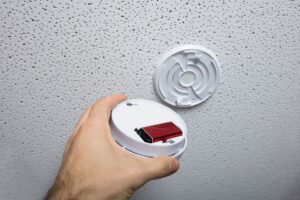
Who Pays For What When a Tenant Vacates
Why am I being charged for repairs after a resident moves out?” “Shouldn’t the resident be responsible?”
These are common questions from landlords, and the honest answer is that it often depends on how the court—or even a specific judge on that day—interprets the situation.
As your property management company, we’re positioned between both the landlord and the resident, each believing they’re entitled to the security deposit for things like damages, cleaning, or painting. When no agreement is reached, the matter can end up in court, where decisions frequently favor the resident.
Our role is to keep you informed about evolving rental laws and share our observations from small claims court. Recently, judges have taken a firm stance against “nickel-and-diming” residents, often dismissing claims for minor items like light bulbs, batteries, basic cleaning, and touch-up painting.
As the Law Reads
The categories below fall under Tenant-Landlord Law. While each has its nuances, the courts are generally clear on who is responsible for what.
Carpet: Has a 10-year lifespan and may be prorated if damaged before that time.
- Paint: Considered to have a 2-year lifespan.
- Blinds: Typically last about 4 years.
- AC filters, smoke detector batteries, lightbulbs: These are viewed as standard costs of doing business.
- Normal wear and tear: This is the most subjective category and often the hardest to define.
Let’s take a closer look at each to better understand how they’re handled.

Carpet
Carpet typically has a lifespan of 10 years, although this can vary depending on the quality. If it was newly installed when the resident moved in and they lived in the home for five years, the cost of replacement is generally split—50% covered by you and 50% by the resident.

Paint
Paint has an average lifespan of two years, which courts generally consider when determining responsibility. If the home was freshly painted before move-in,
- Resident stays less than 1 year: They’re typically responsible for 100% of repainting costs.
- 1–2 years: Costs are usually split 50/50.
- After 2 years, Painting becomes the owner’s responsibility.
To extend the life of your paint, we recommend using high-quality brands like Vista or Sherwin-Williams and opting for a water-based semi-gloss, which allows scuff marks to be easily wiped clean.
If a resident paints the walls a custom color and doesn’t restore them before moving out, they may be charged for one or two coats of paint, regardless of how long they lived there.
If a resident patches a hole (e.g., from a mounted TV), you may charge for patching, sanding, and texturing before the two-year mark. However, after two years, painting over the patch typically cannot be charged, as courts often deem it part of expected maintenance.
Lastly, always paint like-for-like. Spot painting with flat paint over semi-gloss may not be accepted as proper touch-up work, as it will stand out.

Blinds
Blinds have an average lifespan of four years, though this can vary based on quality and sun exposure. Prolonged direct sunlight can cause blinds to wear out more quickly. As with carpet and paint, courts typically apply a proration based on the age and condition of the property.
If damage is due to misuse, such as bending or reaching through the slats, the resident may be held responsible. However, if the blinds are over four years old, most judges will consider the damage normal wear and tear and place the cost on the owner.

Misc. Items or Smaller Items
Courts have shifted their stance on minor items, such as light bulbs and smoke detector batteries. While residents were once held responsible for replacing them upon move-out, judges now often question whether a bulb simply burned out when the switch was flipped or if a battery died naturally. Since it’s nearly impossible to prove otherwise, these items are now generally considered part of the cost of doing business for property owners.

Abuse and Damage
In cases where the resident causes damage, such as a dog digging in the yard, chewing on sprinkler lines, or creating holes in window screens, these are considered tenant responsibilities. Missing screens or smoke detectors also fall under resident damage. In such instances, the costs of repairs or replacements will be deducted from the resident’s security deposit.

While it may not always feel fair for landlords to cover certain repair costs, court rulings today often favor residents. To protect our clients, we’ve been documenting properties with video and audio walkthroughs since 1992. This thorough documentation helps us assess damages accurately. To offset these costs, we recommend modest annual rent increases—just $50 a month adds up to over $12,600 in six years. This approach ensures funds are available for necessary repairs and improvements, and we encourage landlords to consider our suggested increases at renewal time.
So, how to make sure you will have the money when you need it for repairs?
As mentioned in previous articles, it’s wise to open a separate checking account—label it “Investment Checking”—to ensure increased rent income isn’t unintentionally spent. By keeping rent deposits separate from your funds, you’ll have the $12,600 (or more) available when repairs or improvements are needed.












